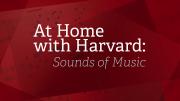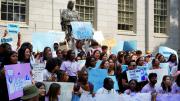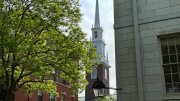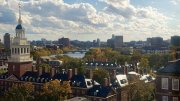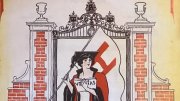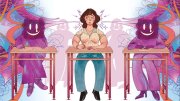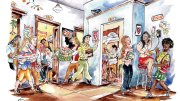This round-up is part of Harvard Magazine’s series “At Home with Harvard,” a guide to what to read, watch, listen to, and do while social distancing. Read the previous selections, featuring articles about climate change, racial justice, movies and theater, and more, here.
Musicians, music composers, music scholars: Harvard and Boston are home to some of the world’s most interesting and diverse practitioners of the art, and Harvard Magazine covers a slice of the music scene in frequently. Below, find a selection of just a few of our favorites.
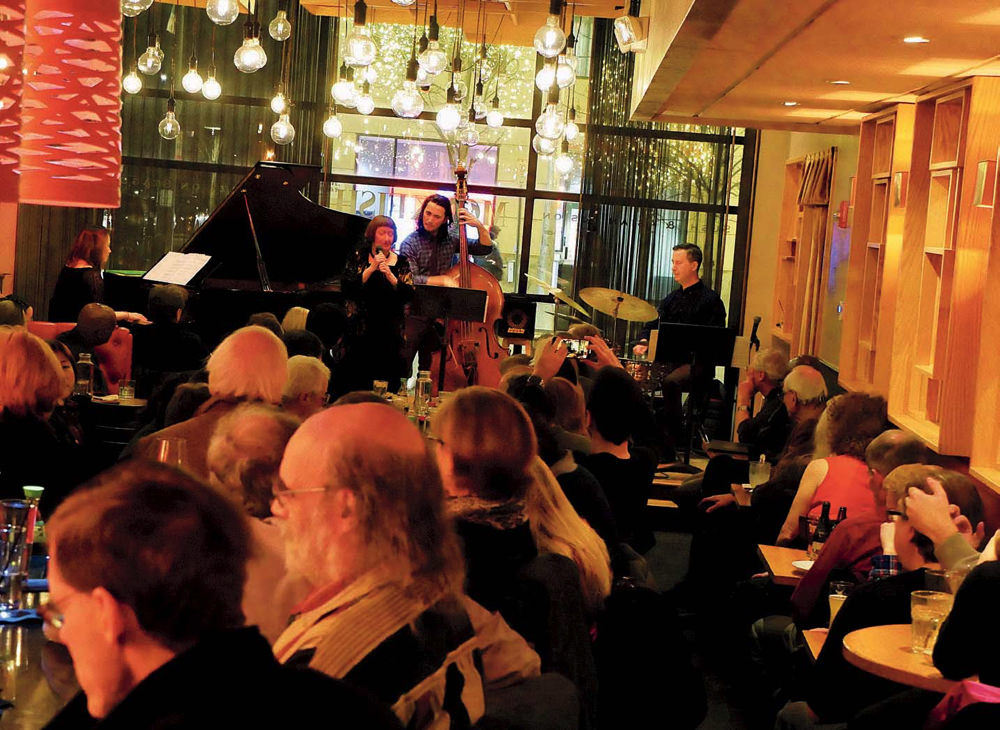 Sheila Jordan performs with the Yoko Miwa Trio at The Mad Monkfish, in Cambridge.
Sheila Jordan performs with the Yoko Miwa Trio at The Mad Monkfish, in Cambridge.Photograph by Janice Tsai
Before I wrote “Jazz and Boston: A True Combo,” I never thought of Boston as a true jazz city. New Orleans and New York City, sure, but not Boston. But as I did more research, I learned about Boston’s rich history as both an incubator and purveyor of top jazz talent. (Where do you think many of New York’s top players learned the ropes?) In the end, I gathered a few of the best places to find jazz in Boston. I hope that one day, you’ll be able to check some of them out.
“One Small Step for Music,” a feature about Peabody professor of music Alex Rehding, came out of a much, much shorter piece. But after finishing up that initial assignment, I felt I had barely scratched the surface of what Rehding had to offer—specifically, the interstellar angle. Decades after NASA launched The Golden Record into space, Rehding is still fascinated by the philosophical, theoretical, and musicological implications of the project. After talking to him, I was, too. Working on the feature changed how I think about music, and I hope it might interest you as well.
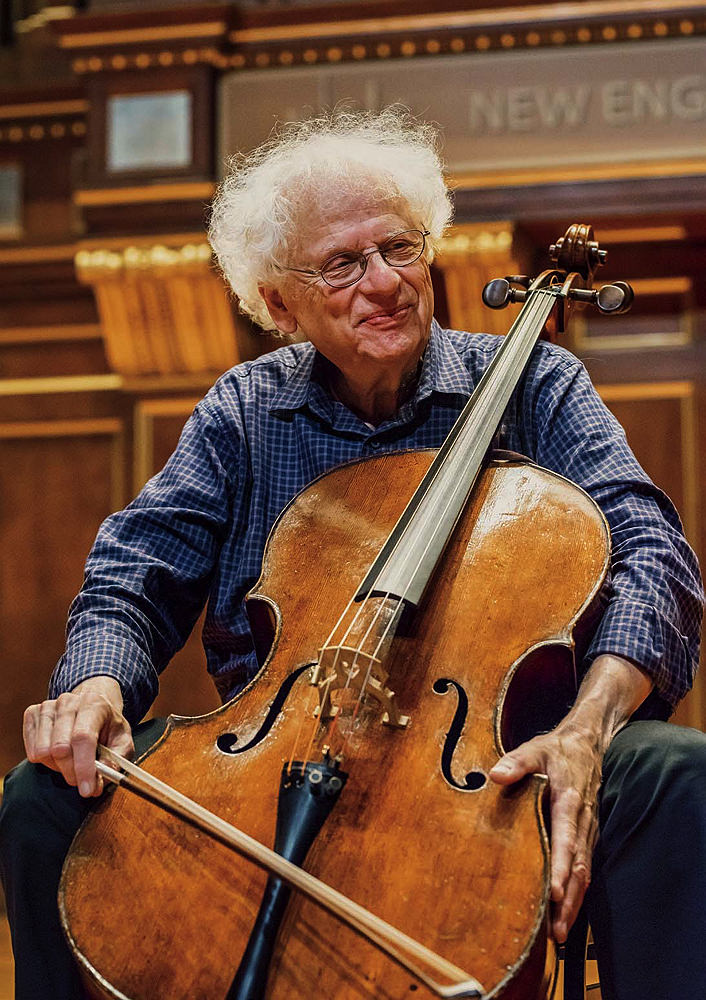
Cellist and teacher Laurence Lesser is celebrating his forty-fifth year at the New England Conservatory of Music.
Photograph by Andrew Hurlbut
“Once Again, With Feeling” is a great profile of legendary cellist and pedagogue Laurence Lesser ’61, who, after decades of playing and teaching the instrument, sees more room for growth. “I’m still learning how to play,” he says. “It’s like practicing medicine or languages: you never stop learning, you never stop growing.” It’s a terrific illustration of the mindset of a great artist, one whose influence will endure for decades to come.
~Jacob Sweet, Staff Writer/Editor
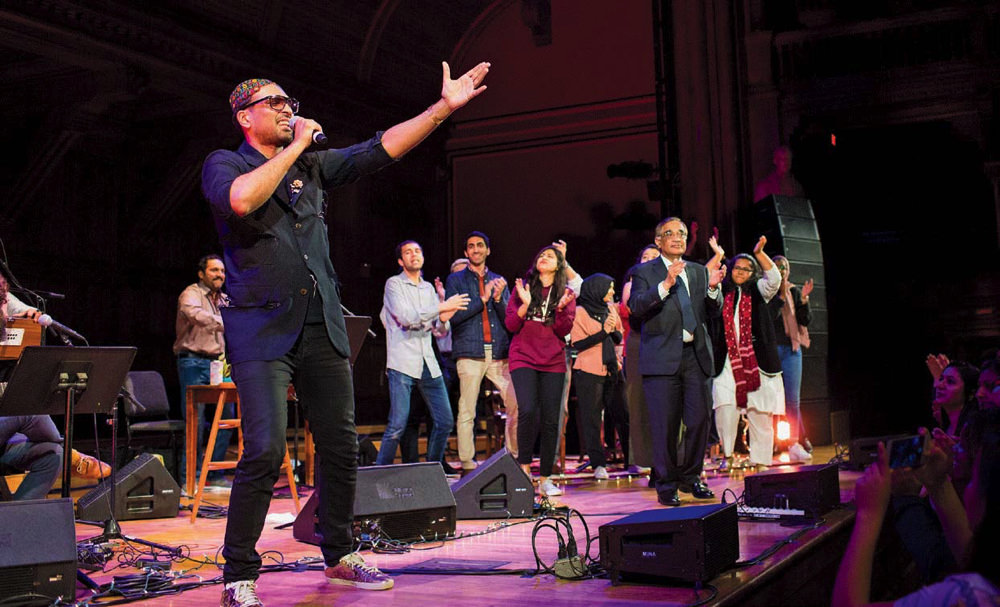
Ali Sethi brings the Sanders Theatre crowd to its feet during a concert last spring. His Harvard mentor, Ali Asani (right, in suit and tie), joined him on stage.
Photograph by Jake Belcher/Courtesy of the Office for the Arts at Harvard
True story: I blew out the speakers on my laptop while reporting “A Melodic Being.” Ali Sethi’s music is infectious and enrapturing—especially when you turn up the volume—and I listened to it over and over while writing about him. My computer’s speakers finally quit one day when I was replaying (for the nth time) a video in which he and his band spiral joyously through a live version of “Dama Dam Mast Qalandar,” while the audience jumps to their feet, hands in the air. Sethi’s music often combines the ancient folksongs he grew up singing in Lahore, Pakistan, with contemporary pop sounds. But his art goes deeper than that: classically trained in traditional Pakistani music, Sethi transforms Sufi ghazals and qawwalis—love and devotional poems that emphasize tolerance, pluralism, and an inward search for the divine—into his own “avenue of dissent” in a modern Pakistani culture that doesn’t make room for open opposition. “The poems are so extremely inclusive,” he says. “And the appetite for Sufi music in Pakistan allows people like me to get away with a lot of potentially subversive stuff through the metaphors of Sufi poetry—these beautiful, deliberate ambiguities.” After reading about him, check out some of Sethi’s vast catalog of music on YouTube.
~Lydialyle Gibson, Associate Editor
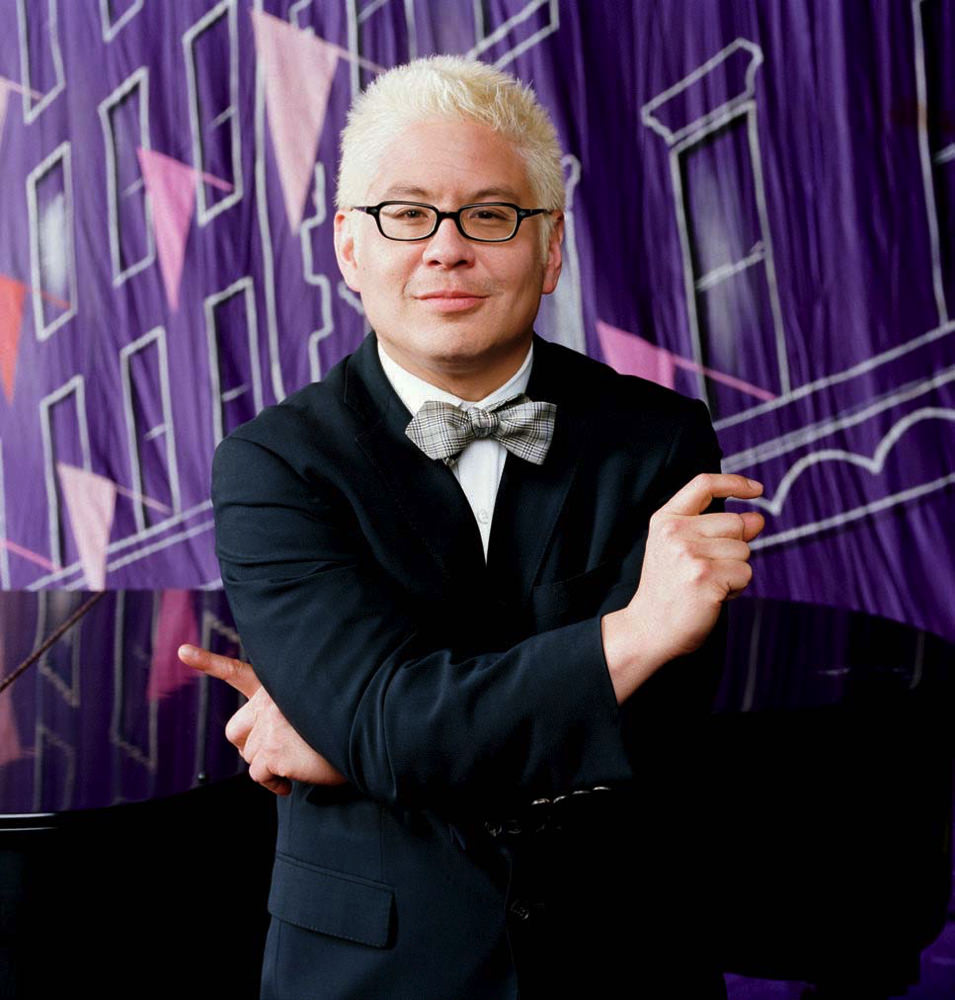
As a performer, Lauderdale is often the center of attention. With Meow Meow, he embraces a supportive role.
Photograph by Autumn de Wilde
Three Harvard Magazine music stories I love: my colleague Jacob Sweet’s “Cabaret and Cooperation,” a profile of Pink Martini band leader Thomas Lauderdale ’92; “Rage, Reborn,” on Tom Morello ’86, a member of Rage Against the Machine and Audioslave; and “The Art, the Play, and the Rigor,” on Claire Chase, flutist and professor of the practice of music, and one of “the most important figures working in classical music today.” Each artist differs in genre and style, but all three have used music as an aid to political activism. “After graduating with a degree in history and literature,” Jacob writes of Thomas Lauderdale, “he moved back to Portland and planned to run for political office, attending ‘every political fundraiser under the sun.’ Finding them boring, he found himself on stage in 1994, in a cocktail dress, opening for a concert in opposition to a proposed anti-gay rights amendment to the Oregon constitution.” These profiles will broaden your perspective on music and social change.
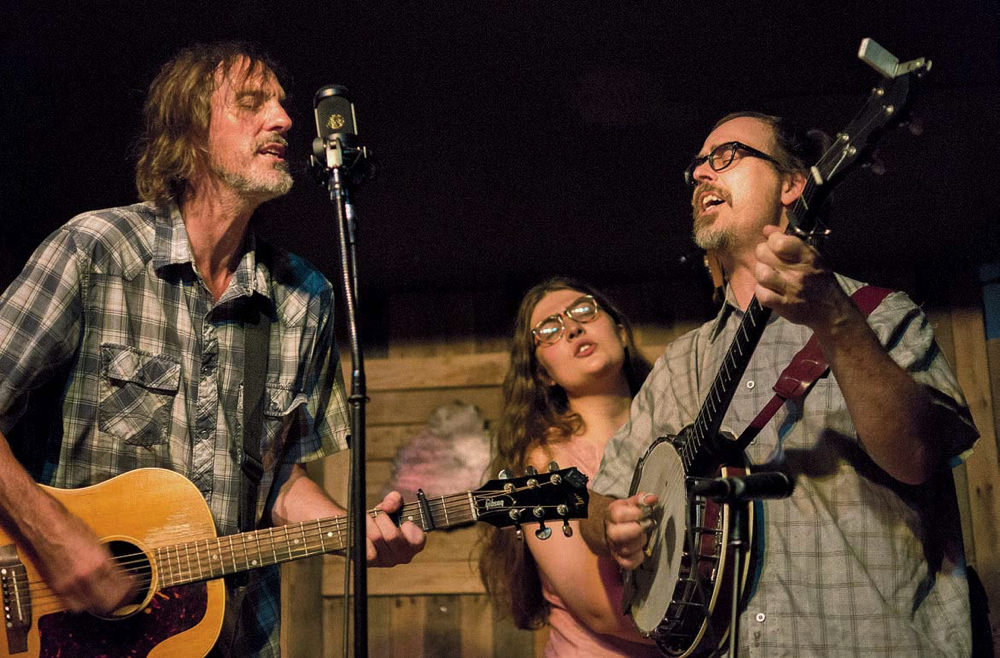
Sean Staples, Hazel Royer, and Eric Royer perform
Photograph courtesy of Atwood’s Tavern
One of my favorite musical experiences ever took place at Atwood’s Tavern, a Cambridge bar devoted to bluegrass. I was lucky: I attended for a Harvard Magazine assignment not long before the COVID-19 shutdown. Atwood’s is now temporarily closed, but I hope all our local readers can enjoy it when it returns. Or find a bluegrass bar near you—as Eric Royer, a veteran banjoist at Atwood’s, explained, the genre is best experienced in these intimate spaces. These days, he added, bluegrass is reaching broader, younger audiences beyond its Appalachian roots because listeners crave these small, acoustic shows: “It’s almost like a reaction to a lot of technological stuff that we’re experiencing now.”
~Marina Bolotnikova, Associate Editor
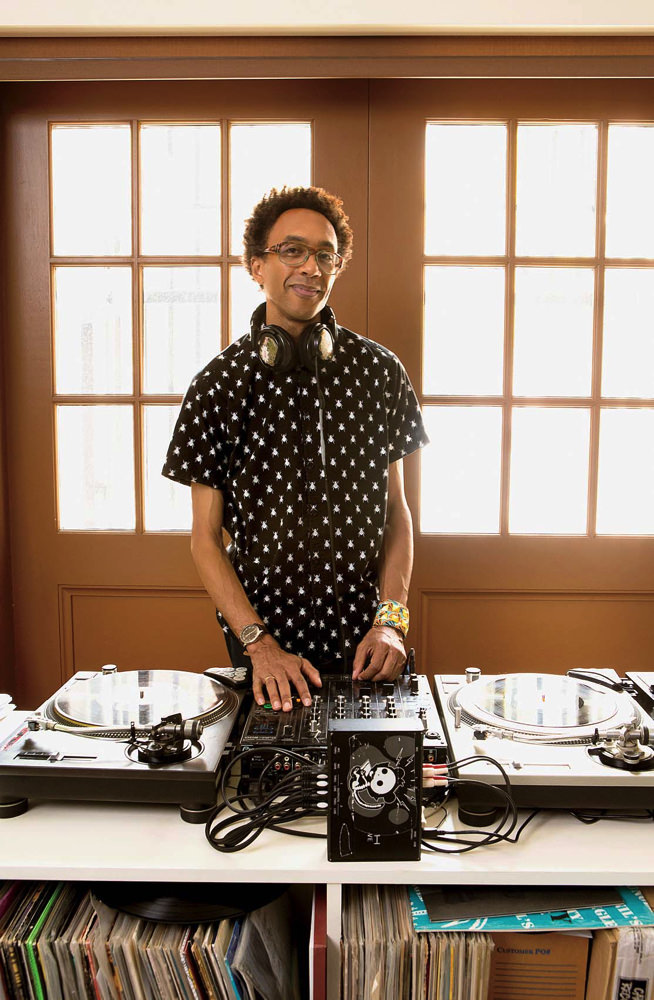
Turntables, headphones, a mixer, and his eclectic music collection prevail in Jace Clayton’s home “office.”
Photograph by Robert Adam Mayer; styling by Prellezo
Musical undergrounds are everywhere, vibrant and diverse—and sometimes ephemeral. Take a mixtape recording of hip-hop music from New York City circa 1984. Hip-hop is mainstream now, but half that music doesn’t exist in any digital catalog, or even in the echoing archives of the internet. Jace Clayton ’97, also known as DJ/rupture, is a student of such musical undergrounds. In “World Music 2.0,” a deft account of his global sonic explorations as a creative DJ (which culminated in a book, Uproot: Travels in 21st-Century Music and Digital Culture), ethnomusicologist Lara Pellegrinelli, Ph.D. ’05, explains how Clayton seeks to understand musically obscure phenomena. Why were Berber singers using Auto-Tune, he wondered, and DJs who were playing cumbia sonidera at quinceañeras (coming-of-age celebrations for girls) talking over the music? “Clayton trains his eye on what is invisible to most Americans,” writes Pellegrinelli: “that which is close to the ground, informal, and outside the standard channels of distribution.”
~Jonathan Shaw, Managing Editor
More from “At Home with Harvard”
- Spring Blooms: Your guide to accessing the Arnold Arboretum as the seasons turn in Boston
- Harvard in the Movies: Our favorite stories about Harvardians on screen
- The Literary Life: Our best stories about the practice and study of literature
- Night at the Museum: Our coverage of Harvard’s rich museums and collections
- Nature Walks: Walking, running, and biking in Greater Boston’s green spaces, even while social distancing
- Supporting Local Businesses: Our extensive coverage of local restaurants and retailers, and how you can support them during this time of crisis
- Medical Breakthroughs: Our best stories going deep into the ideas and personalities that will shape the medical care of tomorrow
- Rewriting History: From race and colonization to genetics and paleohistory, our favorite stories about the people reshaping the study of history
- The Climate Crisis: Highlights from our wide-ranging coverage of the environment
- Crimson Sports Illustrated: With 2020 winter sports ending early and the spring collegiate season wiped out almost entirely, we look back at Crimson highlights from past years.
- The Real History of Women at Harvard: Stories covering the admission of women, the Harvard-Radcliffe merger, the rise of women in the faculty ranks, Harvard’s first woman president, and more
- The Undergraduate: Our favorite student essays on the undergraduate experience
- The Secret Lives of Animals: From zoology and evolutionary science to animal-rights law to the joys of local wildlife, a selection of our favorite animal stories
- Harvard on the Small Screen: Our coverage of the creators, writers, and actors in your favorite TV shows
- Extraordinary Lives: From our “Vita” section, extraordinary profiles of authors, artists, activists, and more
- Great Legal Minds: Our favorite stories on the minds reshaping American law
- Harvard History through a New Lens: Some of our most notable stories about obscure, dark, or surprising episodes in Harvard’s history
- Health and Fitness: Our extensive coverage of Harvard’s breakthough health and wellness research
- Pride Month: Stories of Harvard's LGBTQ life, research and history
- Inequality in America: Stories of America’s extreme inequality
- The Immigrant Experience: A selection of our writing on immigration, displacement, and the global refugee crisis
- Harvard in the World: Harvard Magazine’s coverage of the University’s expanding global reach
- Theater & Broadway: Harvardians take to the stage.
- American Democracy: Our coverage of the nation's ailing democracy
- Traveling for the Story: Stories from all over the world
- Library Treasures: Our coverage of Harvard’s libraries, more relevant than ever in an online world
- Women in Sports: Celebrating women athletes raising the bar in their sports
- Back to School: Our coverage of the freshman experience at Harvard
- Remarkable Alumni: Some Harvard matriculants really took the road less traveled.
